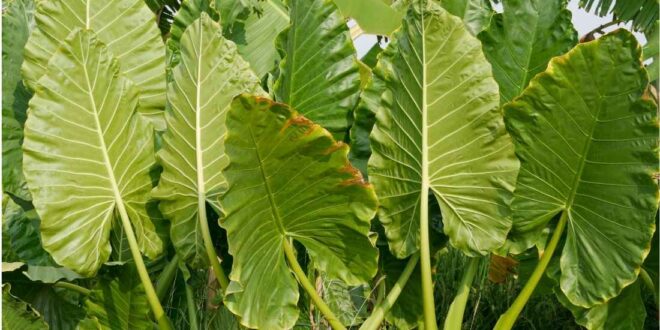Meet The Elephant Ear Plant
Elephant Ear plants, which include genera such as Colocasia, Alocasia, and Xanthosoma, are renowned for their dramatically large, heart-shaped or arrow-shaped leaves that resemble elephant ears.
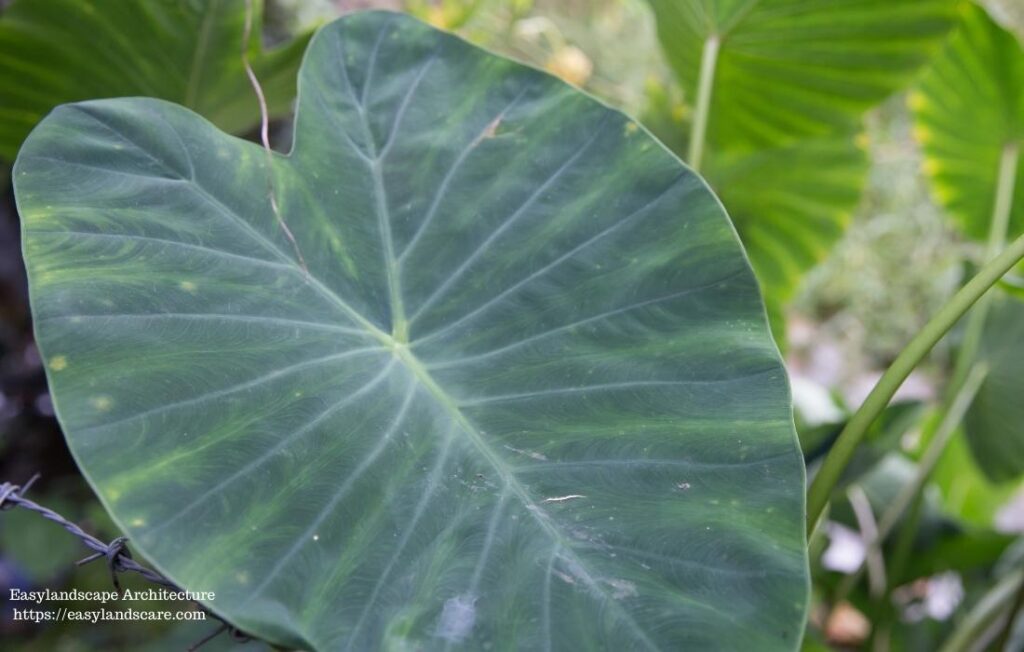
These tropical and subtropical beauties make a bold statement in gardens and indoor spaces alike, adding lushness and a touch of the exotic. While their impressive size might seem demanding, understanding their specific needs for light, water, soil, and humidity will allow you to cultivate these captivating plants successfully. This guide provides a comprehensive overview of Elephant Ear plant care, covering essential aspects to help you enjoy their magnificent foliage.
Why Choose an Elephant Ear Plant?

Elephant Ear plants are undeniably striking. Their oversized leaves come in a stunning array of colors, patterns, and textures, ranging from deep greens and purples to variegated varieties with contrasting veins and edges. They can create a focal point in any landscape or indoor setting, providing a tropical or jungle-like ambiance. Moreover, their rapid growth during the warm season is also rewarding for gardeners eager to see quick results.
Essential Tips for Elephant Ear Plant Care
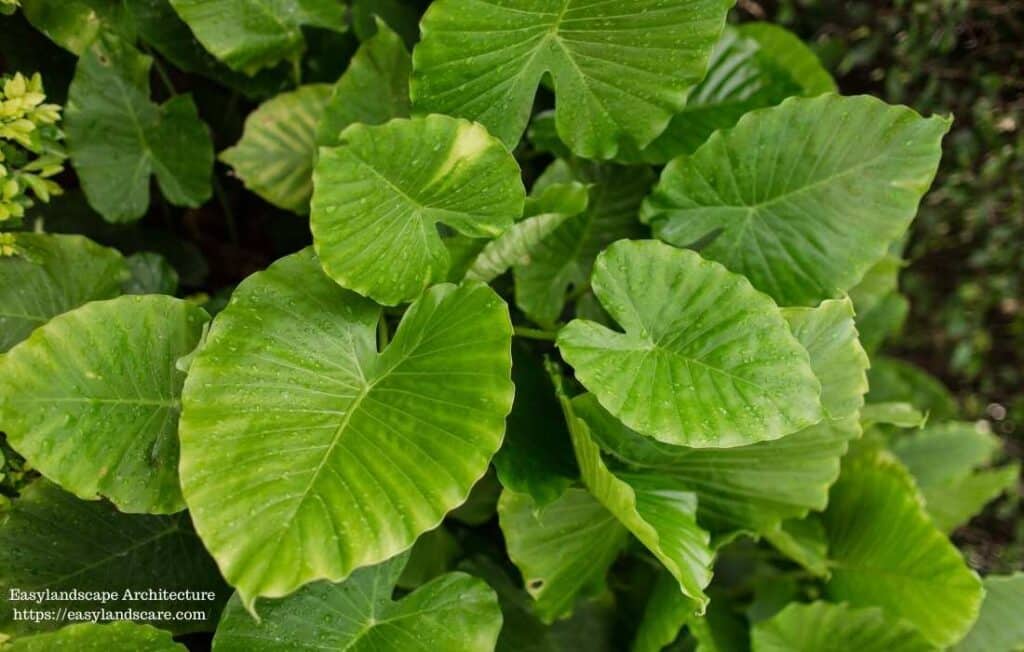
Light Requirements
Understanding the light needs is crucial in Elephant Ear plant care:
- Varies by Species/Cultivar: Light requirements can vary significantly between different types of Elephant Ears.
- Colocasia (Taro): Generally prefers full sun to partial shade. More sunlight often leads to richer colors in darker varieties.
- Alocasia: Typically prefers bright, indirect light. Direct, intense sunlight can scorch their leaves.
- Xanthosoma: Can tolerate a wider range of light conditions, from partial shade to full sun, though afternoon shade in hot climates is beneficial.
- Observe Your Plant: Pay attention to your specific Elephant Ear variety and observe its reaction to the light it receives. Scorched leaves indicate too much direct sun, while leggy growth with pale leaves suggests insufficient light.
- Indoor Placement: Indoors, place Elephant Ears near bright, indirect light sources like east or west-facing windows. South-facing windows may need filtering with sheer curtains.
Watering and Moisture
Watering is a pivotal aspect of Elephant Ear plant care:
- Consistent Moisture is Key: These plants are thirsty plants and generally prefer consistently moist soil, especially during their active growing season (spring and summer).
- Water Thoroughly: Water deeply when the top inch of soil feels slightly dry to the touch. Ensure the entire root ball is saturated.
- Don’t Let Them Dry Out Completely: Unlike some drought-tolerant plants, Elephant Ears don’t appreciate their soil drying out completely for extended periods, especially during active growth.
- Reduce Watering in Dormancy: Many Elephant Ears, particularly Colocasia and some Alocasia, may go dormant in cooler temperatures or shorter days. During this time, reduce watering significantly as their growth slows or stops. Some may even lose their leaves entirely.
- Good Drainage: While they like moisture, the soil should still be well-draining to prevent root rot.
Humidity Preferences
Humidity is another crucial factor in Elephant Ear plant care:
- High Humidity is Appreciated: Native to tropical and subtropical regions, Elephant Ears thrive in high humidity levels (above 60%). Dry air can lead to crispy leaf edges and overall stress.
- Increase Humidity By:
- Humidifier: Using a humidifier is an effective way to maintain consistent high humidity, especially indoors.
- Pebble Tray: Place the pot on a tray filled with pebbles and water (ensure the pot base is above the water level).
- Grouping Plants: Grouping plants together creates a more humid microclimate.
- Misting: Mist the leaves regularly with room temperature water, especially during dry indoor periods.
Temperature Preferences
Temperature management is essential in Elephant Ear plant care:
- Warm Temperatures: Elephant Ears prefer warm, consistent temperatures between 18-30°C (65-85°F).
- Avoid Cold Drafts and Fluctuations: Protect your plant from cold drafts, sudden temperature changes, and proximity to heating or cooling vents, which can stress the plant and potentially damage the leaves.
- Not Frost-Tolerant: Most Elephant Ears are not frost-tolerant and will be damaged or killed by freezing temperatures. If grown outdoors in colder climates, they need to be dug up and stored indoors for the winter (if dormant types) or treated as annuals.
Soil Requirements
Soil quality is a key component of Elephant Ear plant care:
- Rich, Well-Draining Soil: Elephant Ears prefer a rich, fertile soil that retains some moisture but also drains well.
- Amend with Organic Matter: Amend your potting mix or garden soil with plenty of organic matter like compost or well-rotted manure to provide nutrients and improve drainage.
- Good Aeration: Ensure the soil provides good aeration to prevent root rot.
- pH: They generally prefer a slightly acidic to neutral soil pH (around 5.5-7.0).
Fertilizer
Fertilization is vital in Elephant Ear plant care:
- Heavy Feeders During Growing Season: Elephant Ears are heavy feeders and benefit from regular fertilization during their active growing season (spring and summer) to support their rapid growth and large foliage.
- Balanced Liquid Fertilizer: Use a balanced liquid houseplant fertilizer diluted to the recommended strength every 2-4 weeks.
- Slow-Release Fertilizer: You can also incorporate a slow-release fertilizer into the soil at the beginning of the growing season.
- Stop Fertilizing in Dormancy: Do not fertilize during the dormant fall and winter months.
Pruning
Pruning is part of maintaining Elephant Ear plant care:
- Remove Dead or Damaged Leaves: Regularly remove any yellowing, brown, or damaged leaves at the base of the plant using clean, sharp pruning shears. This helps maintain the plant’s appearance and prevents potential disease issues.
- Control Size (Generally Not Needed): Pruning to control size is generally not recommended as it can detract from the plant’s natural form. Focus on providing adequate space for growth.
Propagation of Elephant Ear Plants

Elephant Ears can be propagated through several methods, depending on the type:
- Division (Rhizomes, Tubers, Corms): Many Elephant Ears grow from underground structures like rhizomes (Alocasia, some Colocasia), tubers (Colocasia), or corms (Xanthosoma, some Alocasia). These can be carefully divided when repotting in the spring. Ensure each division has at least one growth point (eye or bud) and healthy roots.
- Offsets (Pups): Some varieties produce small offsets or “pups” around the base of the mother plant. These can be carefully separated and potted individually once they have developed their own roots.
- Seeds (Less Common for Home Gardeners): Propagation from seed is possible but can be slower and more challenging.
Overwintering (in Colder Climates)
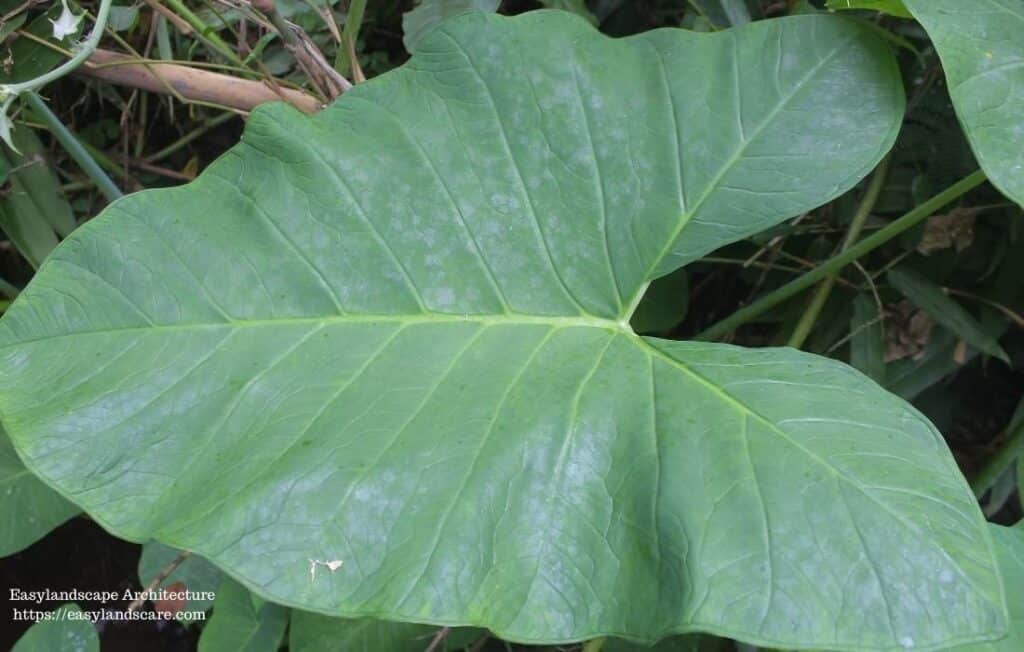
Proper overwintering is crucial in Elephant Ear plant care:
- Dormant Types (Colocasia): After the first frost, dig up the tubers, allow them to dry slightly, and store them in a cool, dark, and dry place (around 7-10°C or 45-50°F) until spring.
- Non-Dormant/Tropical Types (Alocasia, Xanthosoma): These need to be brought indoors before the first frost and kept in a warm, bright location. Reduce watering during the less active winter months but don’t let them dry out completely. They may continue to grow, albeit slower.
Common Issues and Troubleshooting in Elephant Ear Plant Care
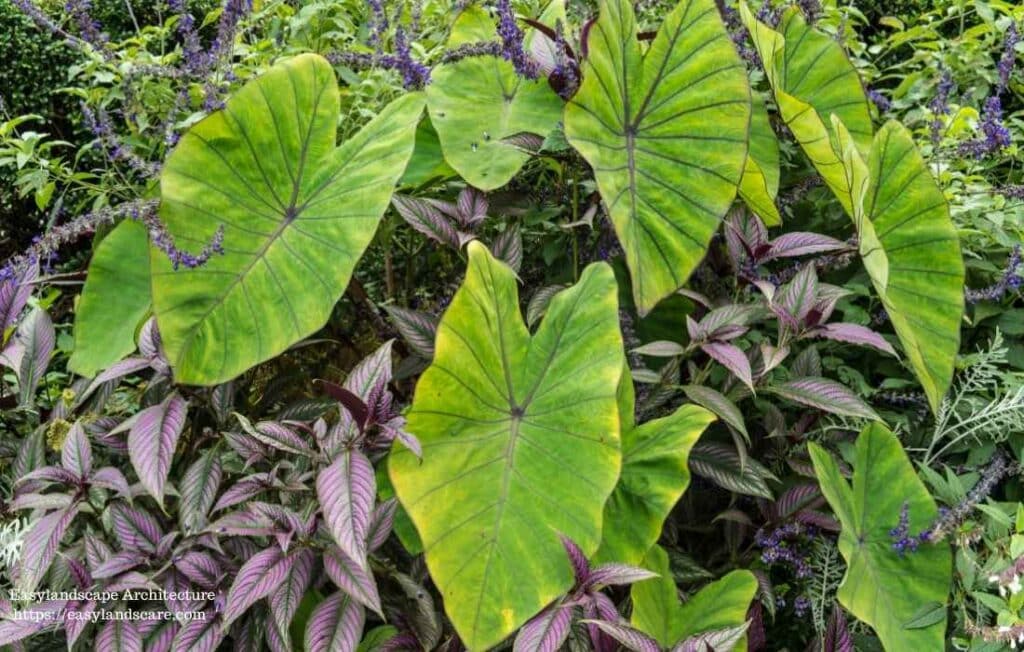
Addressing common issues is part of effective Elephant Ear plant care:
- Yellowing Leaves:
- Overwatering: Allow the top inch of soil to dry slightly before watering. Ensure good drainage.
- Nutrient Deficiency: Fertilize during the growing season.
- Natural Dormancy: If it’s the end of the growing season and temperatures are dropping, it could be the plant entering dormancy.
- Brown, Crispy Leaf Edges:
- Low Humidity: Increase humidity levels.
- Underwatering: Ensure consistent soil moisture.
- Salt Buildup from Fertilizer: Flush the soil with water occasionally.
- Drooping Leaves:
- Underwatering: Water thoroughly.
- Overwatering/Root Rot: Check the roots and adjust watering.
- Cold Temperatures or Drafts: Move the plant to a warmer, sheltered location.
- Pest Infestations (Spider Mites, Aphids, Mealybugs):
- Regular Inspection: Check leaves regularly, especially the undersides.
- Treatment: Wipe leaves, use insecticidal soap, or neem oil.
Tips for Successful Elephant Ear Plant Care

- Understand the specific light and dormancy needs of your plant variety.
- Provide consistent moisture during the growing season.
- Ensure rich, well-draining soil.
- Fertilize regularly during active growth.
- Maintain high humidity levels.
- Protect from cold temperatures and frost.
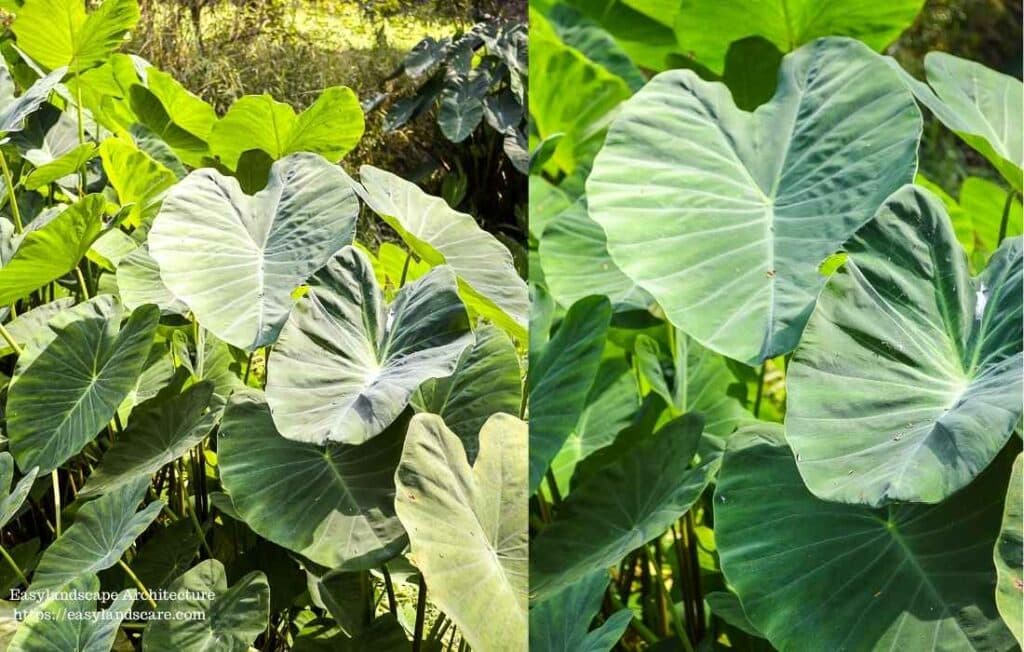
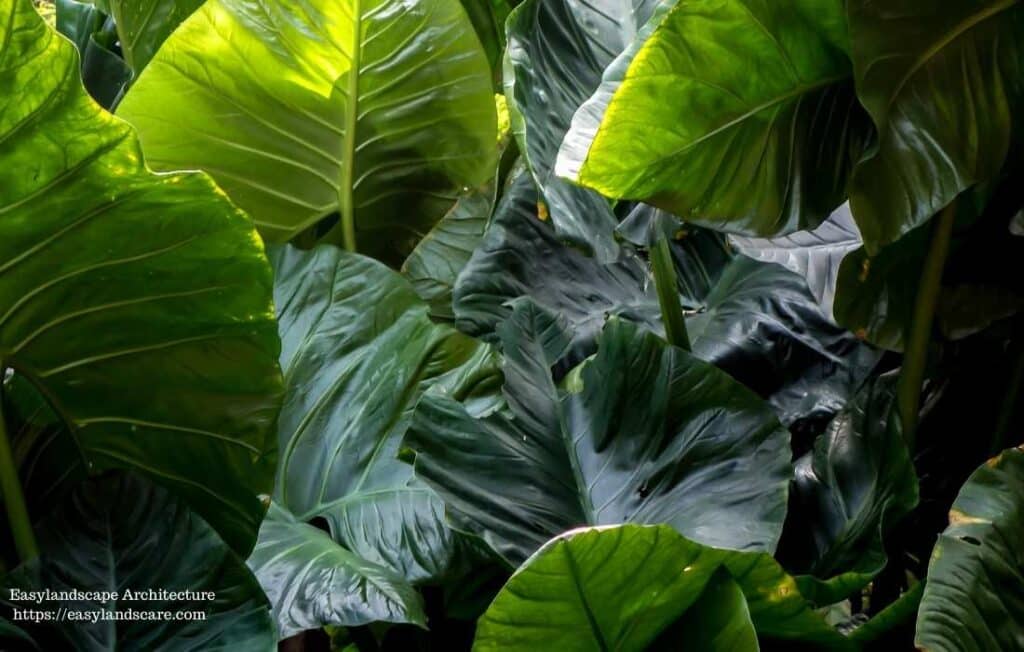
With their dramatic presence and relatively straightforward needs during their active growth, Elephant Ear plants are a rewarding addition to any garden or indoor plant collection. By providing the right conditions and a little attention, you can enjoy their bold and beautiful foliage, bringing a touch of the tropics to your space. Remember to adjust your care based on the specific type of Elephant Ear you are growing.
If you liked this article, you may also like our article on Croton plant care.

